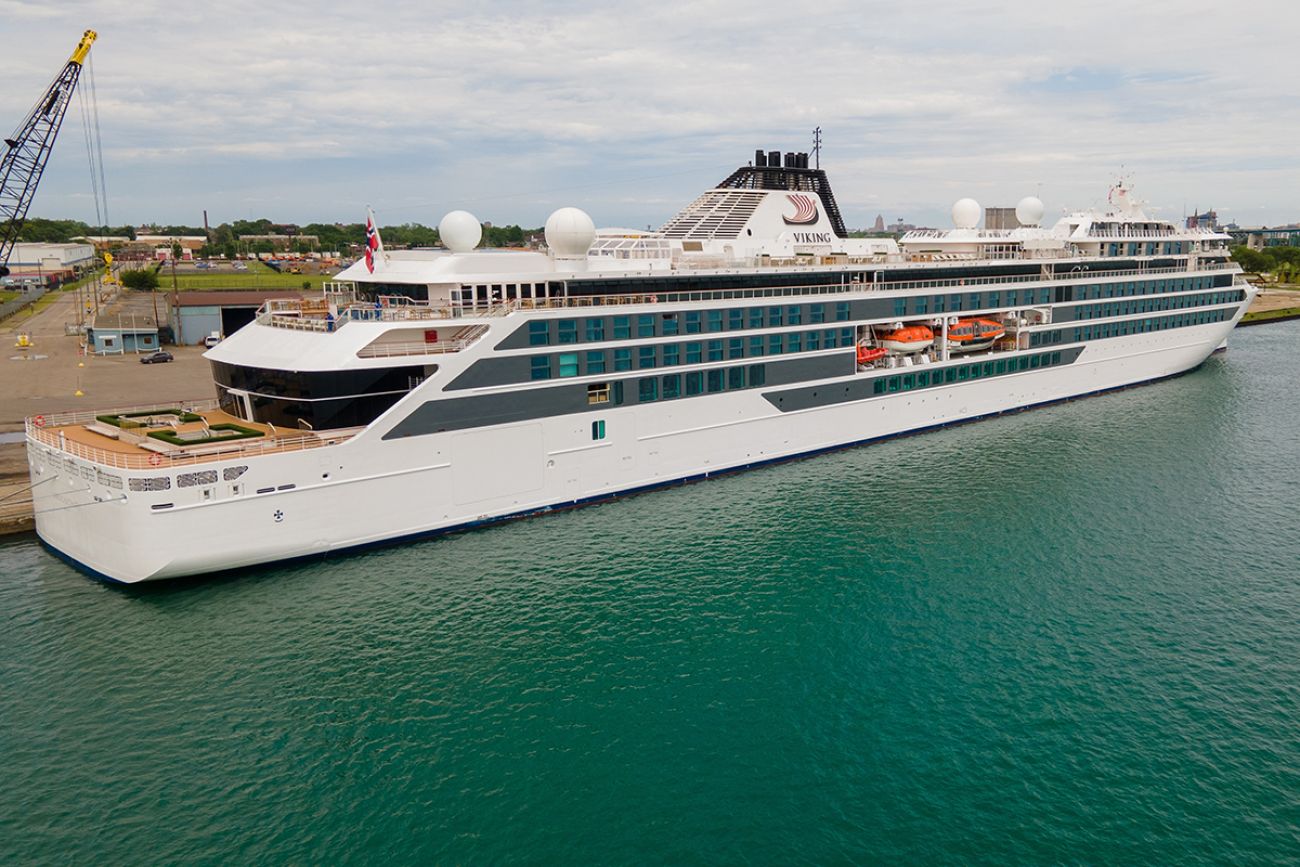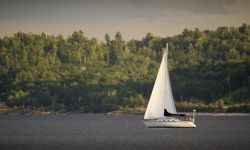Unlikely bond between luxury cruise line, Great Lakes climate scientists

- Viking struck a deal with NOAA to launch 'citizen-based science' expeditions in the Great Lakes
- Two Viking ships are navigating waters around Michigan, Wisconsin, Minnesota and Ontario this summer
- Passengers help NOAA scientists conduct research on the impact of climate change on the Great Lakes
Three years ago, Viking, the luxury cruise line, struck a deal with the National Oceanic and Atmospheric Administration to launch passenger cruises on the Great Lakes with a scientific bent.
This summer, Viking crews, NOAA researchers and passengers paying anywhere from $6,000 to $38,000 are exploring the waters around Michigan, Minnesota, Wisconsin and Ontario on two specially designed ships while performing high-stakes climate research.
Related:
- Harmful algal blooms appearing on Lake Erie earlier than usual
- Great Lakes drownings on rise. Here’s how to protect yourself at the beach
- Watch out! Creepy kudzu coming to Michigan?
“They’re not casual cruises as you would normally think, where everyone’s sitting by the pool having a drink and stuff like that,” said Bryan Mroczka, the partnership’s science director who is also a physical scientist with NOAA’s Great Lakes Environmental Research Laboratory.
“There are science lectures all day, people are engaged, hands on with some of these science experiments where they can safely do so,” he said.
The cruises, now in their second year, hold benefits for both parties. It provides Viking entry into the increasingly competitive Great Lakes cruise industry, where it can market “citizen-based science” expeditions to affluent, eco-conscious travelers. For NOAA and its Great Lakes laboratory, the ships provide a floating laboratory for ongoing research.
Mroczka said NOAA is happy with the results even as he acknowledges the partnership continues to be a work in progress. The venture is run through the Michigan-based Great Lakes lab, one of seven operated by NOAA. Much of Mroczka’s work centers around communicating between researchers from NOAA and Viking and ensuring they have the right materials.
Viking officials did not make themselves available for comment on the partnership. But in a press release from May, Viking said the deal allows the company to “further develop the scientific enrichment program for its Great Lakes voyages.”
Among the challenges, said Mroczka, are maritime rules that regulate transportation in the U.S. involving an international ship. (The two Viking ships are based in Switzerland.)
He noted, for instance, that under the Jones Act, passed after World War I to protect the economic interests of the U.S. maritime industry, cargo and passengers transported from one U.S. port to another need to be ferried by an American crew on an American ship.
“This was a learning experience for a lot of us…(with) multiple legal barriers that have slowed things down,” Mroczka said. “We’ve been working very hard to figure out ways to work with these laws and still be able to get the science that we need.”
The two Viking ships take a variety of paths, such as the “Niagara and the Great Lakes” tour, an eight-day excursion that takes passengers from Toronto to Niagara Falls, Point Pelee, then into U.S. waters in Detroit, to Alpena’s Thunder Bay, Mackinac Island and ending in Milwaukee.
The partnership launched last year, when Octantis was the lone Viking vessel setting sail in the Great Lakes. The Viking Polaris became the second this past May, allowing NOAA to double experiments and data gathering. Each ship can carry up to 378 guests in 189 staterooms.
The first scientific projects went well, Mroczka said: “Weather balloons started to fly, water samples were taken continuously and that data is being looked at as we speak.”
Researchers are focused on measuring the impact of climate change on the Great Lakes, which includes weather balloons, which transmits data to the National Weather Service to assist with forecast models. Information from the weather balloons changes as the ship travels, which makes it different from traditional weather balloons in which the location remains static.
Stephanie Gandulla, resource protection coordinator for the Thunder Bay Marine National Sanctuary in Alpena, said the sanctuary has also benefited from the Polaris and Octantis cruise ships coming ashore.
The Thunder Bay sanctuary was created in part to protect a collection of known shipwrecks in the area through the National Historic Preservation Act. She estimates there are another hundred shipwrecks to be found and said if the deal between NOAA and Viking continues, the ships will help the sanctuary increase its ability to provide visualizations of the lake floor and possibly even identify additional shipwrecks.
“Lakebed 2030 is the initiative to map the Great Lakes (lakefloor) to high resolution by the year 2030,” Gandulla said. “That is something kind of surprising that we’ve only mapped less than 20 percent to high resolution. It’s been mapped for navigation purposes, but as far as for other science purposes — understanding fisheries, habitat, and map looking for shipwrecks — there’s still a lot of work to be done.”
Mroczka said the agreement between NOAA and Viking is set to last until 2025, but he said that does not mean that’s when it will end. Future projects are being considered but most of the focus is on current research.
“Now that a lot of people have seen how the process works and hopefully that next data call for projects will be streamlined and develop faster than the first time,” Mroczka said. “But this partnership is moving forward and it’s got a bright future.”
Michigan Environment Watch
Michigan Environment Watch examines how public policy, industry, and other factors interact with the state’s trove of natural resources.
- See full coverage
- Subscribe
- Share tips and questions with Bridge environment reporter Kelly House
Michigan Environment Watch is made possible by generous financial support from:
Our generous Environment Watch underwriters encourage Bridge Michigan readers to also support civic journalism by becoming Bridge members. Please consider joining today.
See what new members are saying about why they donated to Bridge Michigan:
- “In order for this information to be accurate and unbiased it must be underwritten by its readers, not by special interests.” - Larry S.
- “Not many other media sources report on the topics Bridge does.” - Susan B.
- “Your journalism is outstanding and rare these days.” - Mark S.
If you want to ensure the future of nonpartisan, nonprofit Michigan journalism, please become a member today. You, too, will be asked why you donated and maybe we'll feature your quote next time!






